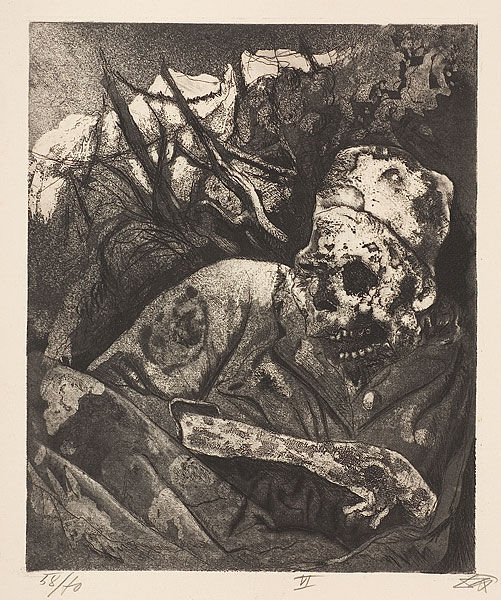Otto Dix 'The War'
- Ben Samuel
- May 29, 2025
- 3 min read
Updated: Jun 8, 2025
His horrific experiences in the trenches inspired a series of 50 drypoint and aquatint etchings published as 'Der Krieg' in 1924.
The works were inspired by Goya's series The Disasters of War and the painting Tres de mayo , as well as Jacques Callot 's The Miseries of War. Some art historians have stated that the images were also inspired by an anti war book by Ernst Friedrich titled Krieg dem Kriege (War Against War).
The quotes featured in this post are from various dates in Otto Dix's life.

“The artist wants to work so that others can see what this kind of thing was like. I primarily depicted the horrible consequences of war. I believe no one else has seen the reality of that war as I have: the privations, the wounds, the suffering. I chose truthful reportage of war; I wanted to show the destroyed land, the corpses, the wounds.” - Otto Dix (1891 - 1969)

"I did not paint war pictures in order to prevent war. I would never have been so arrogant. I painted them to exorcise the experience of war. All art is exorcism. I paint dreams and visions too; the dreams and visions of my time. Painting is the effort to produce order; order in yourself. There is much chaos in me, much chaos in our time." - Otto Dix (1891 - 1969)

"People were already beginning to forget, what horrible suffering the war had brought them. I did not want to cause fear and panic, but to let people know how dreadful war is and so to stimulate people's powers of resistance." - Otto Dix (1891 - 1969)

"Not that painting would have been a release. The reason for doing it is the desire to create. I've got to do it! I've seen that, I can still remember it, I've got to paint it." - Otto Dix (1891 - 1969)

“Even war must be regarded as a natural consequence...Corpses are impersonal.” - Otto Dix (1891 - 1969)

“Lice, rats, barbed wire, fleas, grenades, bombs, holes, bodies, blood, Schnapps, rats, cats, gas, guns, dirt, bullets, mortars, fire, steel: that's what war is. The Devil's work. Nothing but the work of the Devil!” - Otto Dix (1891 - 1969)




“I had to go to war. I had to live through it. I had to experience what it was like when someone near me was suddenly hit by a bullet and fell . . . I am such a realist, I had to see it all with my own eyes . . . the hunger, the fleas, the mud, the shitting in one’s pants with fear . . . To be crucified, to experience the deepest abyss of life . . .” - Otto Dix (1891 - 1969)
Footage of Otto Dix painting and an interview with Dix explaining war experience. Footage taken from a BBC Arena program on Otto Dix which can be viewed in full here




Comments